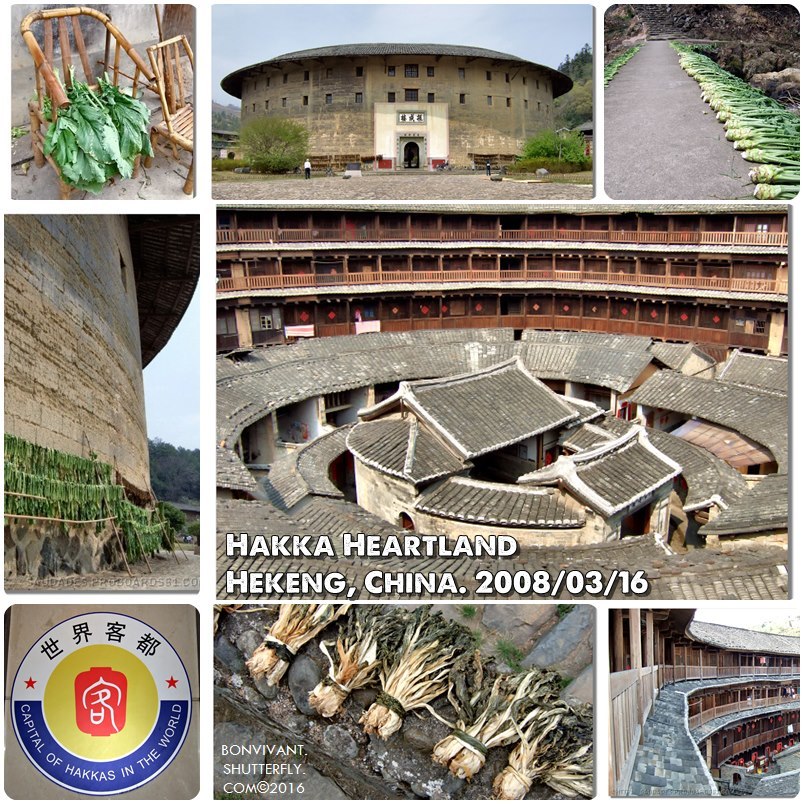If you haven’t had it, you’ll LOVE Hakka style, too!
客家菜? There were a number of Kejia restaurants in Shenzhen, though I only ate at a couple. The menus are mostly filled with things I’d never want to eat…save maybe for a few “casseroles.”
What are your favorite Hakka dishes?
Our all time favorite is Manchurian cauliflower, which is an appetizer dish where we go, but they also serve it as a vegetable side dish using other veggies. Chili chicken, lamb, paneer or beef Hakka style, are always on the table, also spicy coriander soup and their version of malia kebab. We order our food “911” or “Indian hot” where they know us well enough to tip toe up to the “it almost hurts too much to eat” line where we like it.
That all sounds like things I’d eat…but are you familiar with the Hakka to which I’m referring-originally from Southeastern China?
I don’t know; tell me what exactly you are referring to and I’ll let you know. The place I am eating at consistently has Nepalese owners…
Even though it’s wiki…https://en.wikipedia.org/wiki/Hakka_cuisine#Hakka_cuisine_in_India
Yes, much of what’s listed there, such as Manchurian, chili meats/fish and soups are there. A lot of Indian dishes and they make ginger chicken, a lot of dishes heavy in coriander and also methi chicken, etc.
Well…I gave you a direct link to the Hakka that you mentioned, but the rest of the article was about the one to which I referred. Glad to have learned about your version, though!
It’s the only “version” available to me in my area, and it quickly became my favorite place to frequent.
Hakka cuisine punches above its weight in Singapore and Malaysia. The founder of modern-Singapore, Lee Kuan Yew, was Hakka, and the Hakkas make up the 4th-largest ethnic-Chinese group in Singapore after the Hokkiens, Teochews and Cantonese. Most Singaporean Hakkas, like their Hakka brethren in West Malaysia, are from Dabu County (大埔县) and this is reflected in the various commonly-found Hakka dishes we have in Singapore: “sohn pan ji” (taro abacus beads, cooked with pork & dried cuttlefish), “kiu nyuk” (braised pork belly with taro, flavoured with “nam yue”), “cha yoke” (braised pork with wood-ear fungus), spiced duck with ginger, and the ever-popular “ngiong tiew foo” (various types of beancurd and vegetables stuffed with minced fish-pork forcemeat).
The Hakkas in East Malaysia/Borneo come from Zijin County, Heyuan City and Longchuan County, hence the regional variations in the dishes one finds there: pig’s blood jelly stuffed with forcemeat, egg rolls with minced fish filling, etc.
The Hakkas influenced Singaporean and Malaysian Chinese street foods in its many incarnations: Ampang “yong tau fu” is essentially Hakka “ngiong tiew foo”, as most Hakkas settle in that district in Kuala Lumpur, Hakka noodles, heavier and starchier than Cantonese or Hokkien versions, are common in Kuching and Kota Kinabalu, East Malaysia. Hakka cuisine tend to be more rustic than Cantonese cuisine, and heavier than Teochew or Hokkien ones. The Hakka palate seek chewier textures than other ethnic-Chinese groups here in Singapore/Malaysia are used to.
I’m no Hakka cuisine expert, but mei cai kou rou (pork belly steamed and braised with preserved vegetables) is one of my favorite dishes. Most of my experience with Hakka cuisine are classic dishes that have made it into the repertoire of a good Chinese chef, i.e., they pop up on the menu of big restaurants as an offering. My mom loved to make yong tau fu (though she and I prefer taking the filling and stuffing it in eggplant) when I was growing up too.
Would like to learn how to make real Hakka dishes, especially those with preserved vegs. They are dried everywhere, really just everywhere in Hakka heartland (see below).
I have been to Hakka heartland in Hekeng (travelling through Huizhou, Chaozhou, and Meizhou). Check out the middle top photo of a Hakka round house exterior, and the photo directly under is seen from a higher floor. On the ground floor there are kitchens, toilets, laundry facilities, sheds, benches to sit and rest, altars etc. Everything is communal. Sleeping quarters are above, just simple rooms with bamboo beds and wardrobes. Every round house has a name. You can just wander round yourself. The houses are mostly empty during the day as the inhabitants are busy working in the fields.

I defy anyone to read Amy Tan’s “Thousand Secret Senses” and not love Hakka food forever.
Now that you’ve mentioned it - I’ve got to get a copy of that.
Presunto - Lovely photos of the Hakka villages. Have you got a copy of Linda Lau Anusasananan’s The Hakka Cookbook
Hakka food fest in Balik Pulau, a mainly Hakka township in Penang, Malaysia, last weekend:
-
Hakka taro abacus beads, stir-fried with pork and dried cuttlefish:
)
-
Thunder tea rice or “lei cha”:
-
Steamed, braised pork belly with taro in “nam yue” (fermented bean paste):
-
Hakka-style braised pig’s trotters with radish:
-
Tofu stuffed with pork forcemeat (the raw pork was pulverised with metal rods till fine, before being seasoned and used as stuffing.





